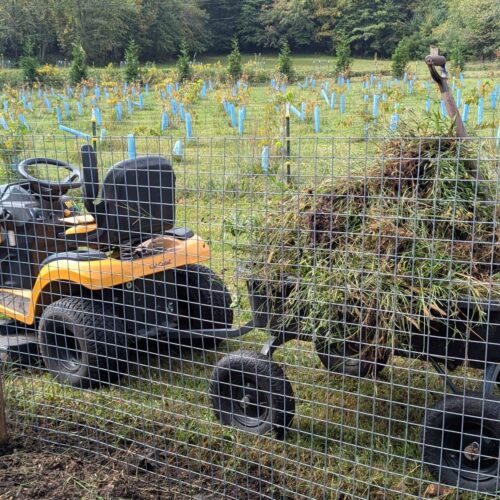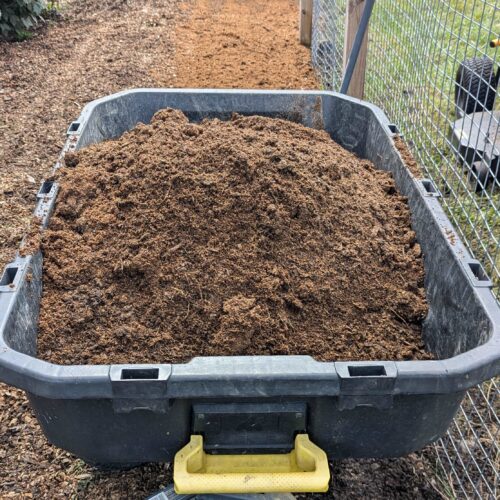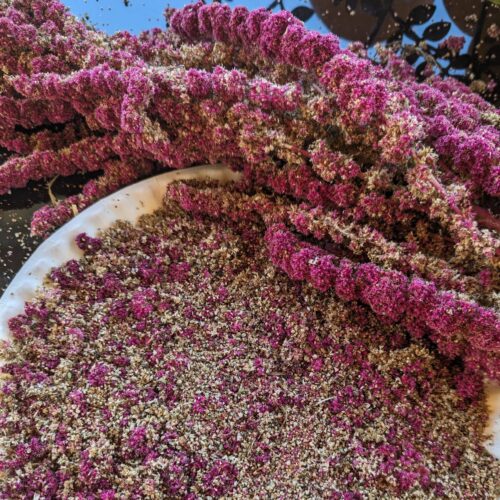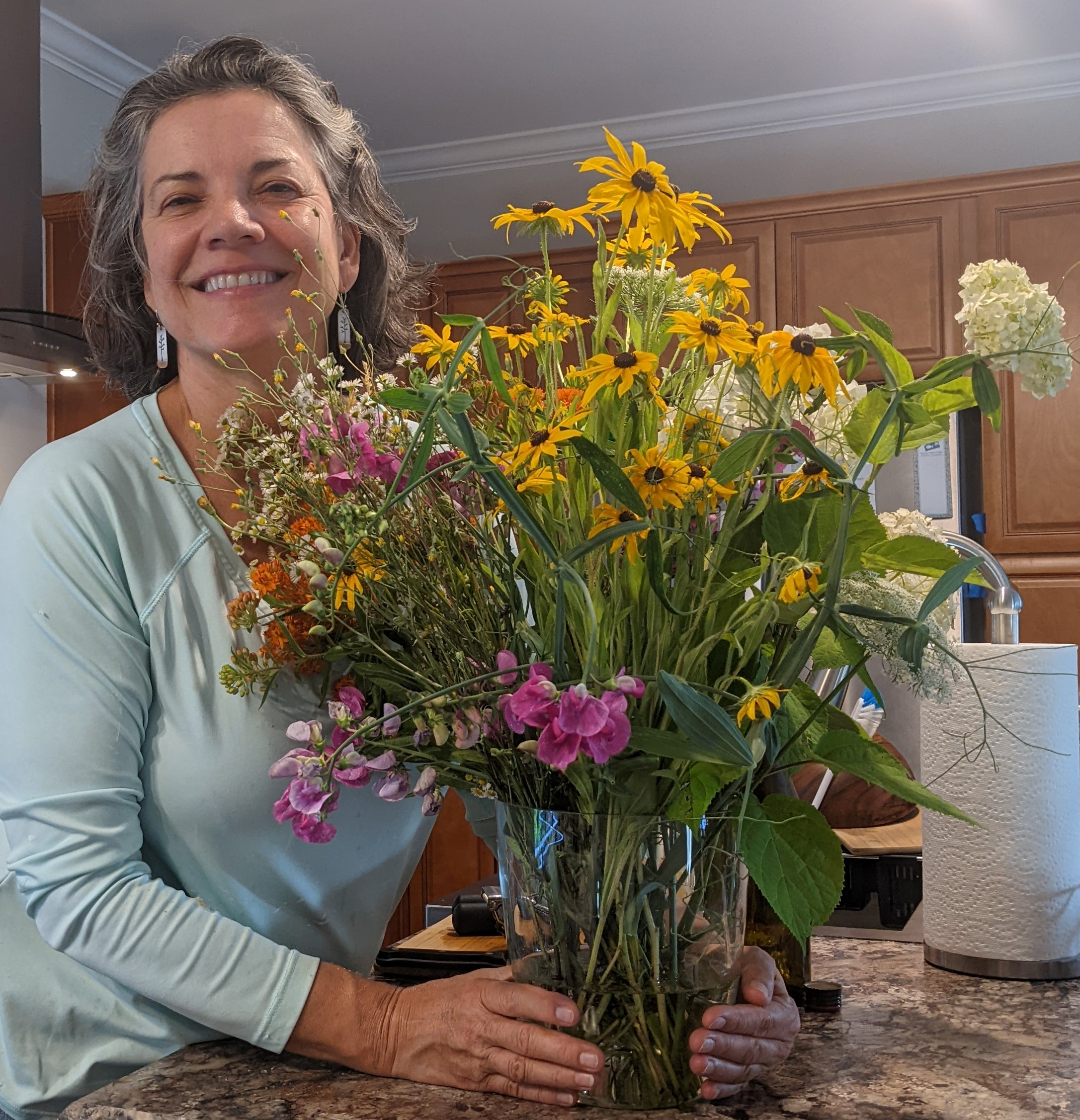Did you know you can get a jump start a spring flower garden this fall? Prepping the site for planting will help insure a healthy start for the next growing season!
Start by weeding the bed you plan for planting. Then make a good addition of compost, generally 2 inches deep, raked evenly over the bed. Seed and rake in. Add a light mulch and you are done!
It is easier to weed your bed using a garden fork after a good soaking rain. The weeds are then removed with their roots more easily. Avoid weeding when the soil is dry, especially if your soils are heavy and clay-ey.

Spread a layer of compost over the bed. We are using composted duck bedding. This compost is high in organic matter and a good source of nitrogen. Its just one of the sources of organic matter we have on hand. You can use compost from your compost pile or purchase a good quality compost such as Happy Frog or Ocean Forest.

Once spread evenly across the bed, sow your seeds. In this bed, I sowed a blend of seed collected from last year’s flower bed. I focused on the flowers that proved easiest to grow in our area, which we determined with a trial flower bed started two years ago. For us, the most successful flowers include cosmos, love-lies bleeding, cleome, tansy, and sunflowers.
In the above image, from left rear, diablo (orange) cosmos, and sunflowers; mid-photo are love-lies bleeding (red) and white cosmos; in foreground, sunflowers and cleome (purple, pink and white).
Cosmos, tansy and sunflowers are all composites. Cleome (spider flower) belongs to its own family. These plants are pollinator magnets, attracting bees, hummingbirds and butterflies. Sunflowers also attract gold finches, which forage the flower heads for seeds. Love-lies-bleeding is an amaranth, which means that many parts of the plant are edible including the leaves and seeds. The seed can be ground and used as flour in baking.

All these species do very well, with little after care. All you need do is to thin the planting and mulch the bed once the plants get going. Water during dry weather, but after that enjoy the garden and harvest cut flowers for the dining room table!

Next time, we’ll discuss some additional fall plant care methods to practice for your landscape.
~ Signing off for now, Joe


